13 Trailblazing Women Who Redefined Medicine
Pioneers like Elizabeth Blackwell — the first woman to receive a doctor of medicine in the U.S. — and Rebecca Lee Crumpler — the first Black woman to become a doctor — broke ground for future generations.
In 2019, women made up the majority of medical students in the U.S. for the first time in history. Today, women also make up 41% of faculty at medical schools.
But women weren’t always welcome in the medical profession. When a group of female medical students tried to take an exam at the University of Edinburgh in 1870, their male classmates rioted.
Did You Know…
In 1960, women made up only 7% of admitted medical students, and before the mid-19th century medical schools banned women completely.
Source: National Institutes of Health
Today, women in medicine still have a long way to go. In 2018, female physicians and surgeons earned just $0.67 for every dollar earned by male physicians. Moreover, white women remain overrepresented in medicine compared to Black and Hispanic women, who together account for just 5% of all U.S. doctors.
The fight for gender equality in medicine is far from over, but it’s important to pay homage to these 13 women who made history and redefined medicine.
Mary Edwards Walker (1832-1919)
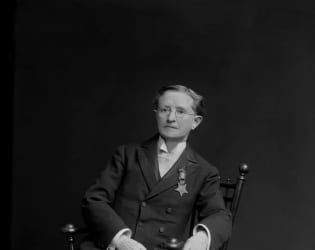
Trained as a doctor before the Civil War, Mary Edwards Walker fought hard for her role as an Army surgeon during the war. At first, the Union Army only let Walker volunteer as a nurse. But Walker persisted and was eventually approved to work as a surgeon in Ohio.
Walker’s work took her across enemy lines. In 1864, Confederate soldiers caught her treating Southerners and sent her to prison as a spy. After the war, Walker’s courage and commitment to military medicine earned her the Medal of Honor. To this day, she is the only woman to receive this coveted reward.
Rebecca Lee Crumpler (1831-1895)
Rebecca Lee Crumpler earned a “doctress of medicine” in 1864, making her the first Black woman in the U.S. to earn a medical degree. After establishing a practice in Boston, Crumpler moved to Virginia to treat formerly-enslaved patients. Crumpler made significant contributions to society in the early years after emancipation by providing medical care to a largely impoverished community.
Crumpler published her medical knowledge and experience treating women and young children in 1883. “A Book of Medical Discourses” set another milestone by being one of the first written by a female physician. Crumpler shares her medical.
Virginia Apgar (1909-1974)
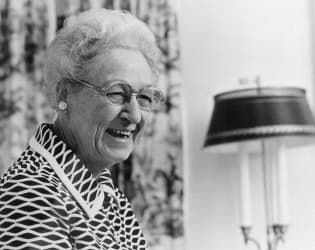
Virginia Apgar was one of nine women at Columbia University’s medical school — in a class of 90. She worked as a surgeon and anesthesiologist, but her largest impact came from her work in neonatal health. Apgar developed a test to assess newborns’ health, scoring babies on their heart rates, movements, color, respiration, and irritability one minute after birth.
“Apgar scores” became a standard part of labor and delivery, helping identify newborns requiring medical attention. Even decades after Apgar’s death, hospitals worldwide continue to use Apgar scores to reduce infant mortality and promote healthy babies.
Trota of Salerno (11th Century)
Considered by many to be the first gynecologist, Trota of Salerno, also known as Trotula, wrote one of the most important medieval medical texts in the 11th century.
Before the rise of universities, women could become physicians in centers of learning like Salerno, an Italian city south of Naples. There, medical knowledge from the Byzantines, Islamic scholars, and Latin writers mixed. Trota synthesized that knowledge in a book about women’s health, that was later translated into more than a dozen languages.
Her book on women’s ailments dictated medical treatments until the 16th century. For women too embarrassed to discuss their problems with male physicians, Trota shared treatments to manage infertility, menstruation problems, and childbirth conditions. She also recommended pain management methods for women in labor, which contradicted the Catholic Church’s views that suffering in childbirth was a consequence of Eve’s sin.
Anandi Gopal Joshi (1865-1887)
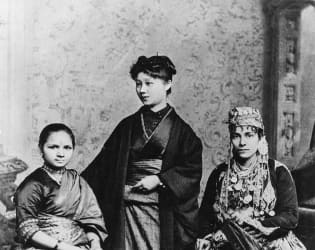
Tragedy struck Anandi Gopal Joshi at a young age. After giving birth to her first child at the tender age of 14, the baby died. The lack of medical care in India was a problem — and Joshi wanted to be part of the solution. So in 1883, she sailed to New York and applied to the Woman’s Medical College of Pennsylvania. In her application, Joshi promised, “to render to my poor suffering country women the true medical aid they so sadly stand in need.”
After earning her degree in 1885, Joshi returned to India. Unfortunately, she died from tuberculosis not long after, at just 21 years old. Joshi wasn’t the only Indian woman doctor for long, though. A year before Joshi died, Kadambini Ganguly became the first woman to earn a medical degree in India.
Sophia Jex-Blake (1840-1912) and the Edinburgh Seven
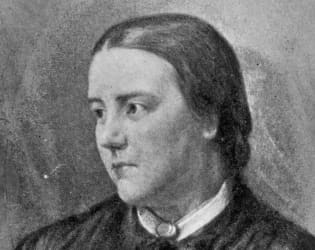
Sophia Jex-Blake wanted to attend medical school at the University of Edinburgh in the 1860s. But when she applied, one of the professors said admitting women would harm the profession because of their low intellect and stamina. Despite this blatant rejection, Jex-Blake and six other women, who became known as the Edinburgh Seven, demanded their spots in the school.
The Edinburgh Seven faced multiple challenges. Around 200 male students petitioned against allowing women to enroll in the school, the university charged the women higher fees, and male professors refused to teach them.
Then, in 1870, hundreds of male students rioted to stop the Edinburgh Seven from taking an anatomy exam. The university ultimately refused to grant any of the women a degree. Five of the Edinburgh Seven moved abroad to earn their medical degrees. Still, all seven continued the fight for women in medicine.
Susan La Flesche Picotte (1865-1915)
Susan La Flesche Picotte is widely considered the first Native American doctor. In 1886, Picotte, a member of the Omaha tribe, boarded a train for Philadelphia to attend the Woman’s Medical College of Pennsylvania, one of the world’s first women’s medical schools. Three years later, she graduated as valedictorian.
Picotte then returned to the Omaha Reservation to serve as a doctor for the Office of Indian Affairs. It wasn’t an easy life — she often had to make house calls on foot through the snow. Some patients even rejected her medical suggestions. But Picotte dedicated decades to improving reservation conditions and eventually achieved her dream of building a hospital on the reservation.
Elizabeth Blackwell (1821-1910)
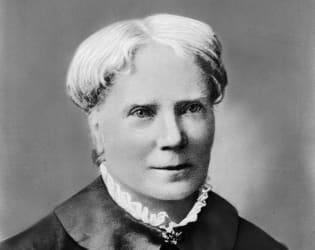
After being left destitute following her father’s death in 1838, Elizabeth Blackwell decided to pursue medicine, becoming the first woman in America to earn a medical degree.
But the path was challenging. U.S. medical schools refused to admit women at the time, and the one college that accepted Blackwell sent her acceptance letter as a joke. Still, Blackwell persisted. Once enrolled in medical school, she was made to sit apart from her male peers, and instructors often banned her from attending labs.
Despite these setbacks, Blackwell graduated at the top of her class in 1849. With gender discrimination limiting her career opportunities, Blackwell opened her own clinic in New York and later founded a medical college that admitted women.
Ogino Ginko (1851-1913)
At 16, Ogino Ginko discovered her husband had given her a sexually transmitted disease. The future doctor swore off men, filed for divorce, and moved to Tokyo, where she began working in a hospital. After watching male doctors mistreat their female patients, Ogino vowed to become Japan’s first female doctor.
As the only woman at her medical school, Ogino faced much harassment, with hecklers trying to force her to drop out. But she kept going, eventually winning over patients who’d vowed never to let a woman doctor touch them. Ogino later founded her own gynecology clinic and practiced medicine for several years.
Gerty Cori (1896-1957)
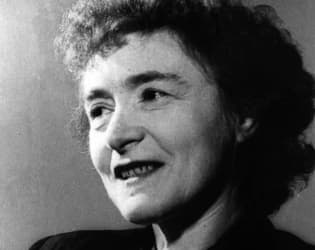
Gerty Cori made history in 1947 as the first woman to win the Nobel Prize in physiology or medicine. Born in Prague, Cori emigrated to the U.S. after completing a doctorate in medicine. She became a professor of biochemistry at Washington University in St. Louis, where she conducted research alongside her husband, Carl, a professor in the medical school.
Together, the Coris researched how the human body processed sugar. Their research spanned insulin production, blood glucose concentration, and hormones.
As a woman, Cori faced many hurdles in her academic career. Most universities refused to hire her, and when Washington University recruited Carl to run its pharmacology department, it offered Cori a research position at a fraction of her husband’s salary.
Fortunately, the Nobel Prize recognized her equal role in groundbreaking medical research.
Hildegard of Bingen (1098-1179)
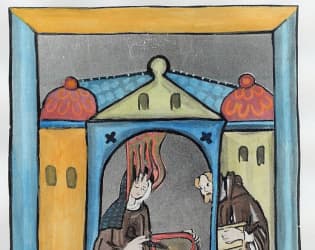
A 12th-century nun known for her holistic approach to healing, Hildegard of Bingen wrote about philosophy, theology, and music and penned several texts on medicine. She argued that treating diseases required an understanding of their causes. Many of Hildegard’s remedies drew upon herbal treatments and remedies designed to promote balance within the body.
Recently, researchers returned to Hildegard’s cures to test whether they worked. By looking at 85 plants recommended by Hildegard, the study found a strong correlation between Hildegard’s treatments and today’s medical use of the same plants.

Florence Nightingale (1820-1910)
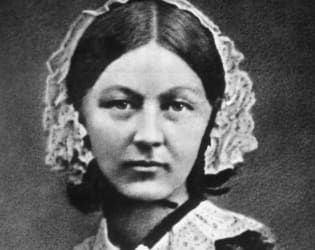
In the early 19th century, when women had few medical options, Florence Nightingale became a nurse and revolutionized hospital design.
During the Crimean War, Nightingale led a team of female nurses who cared for injured British soldiers. At first, the male doctors scorned the nurses’ assistance, convinced that their own methods worked better. But thanks to Nightingale’s insistence on new sanitation policies and her attention to each soldier, the death rate at the military hospital dropped from 40% to just 2%.
Nightingale carried that wartime experience back to Britain, where she put together a data-heavy presentation for Queen Victoria.
The monarch used Nightingale’s work to transform hospitals across the country.
Susie King Taylor (1848-1912)
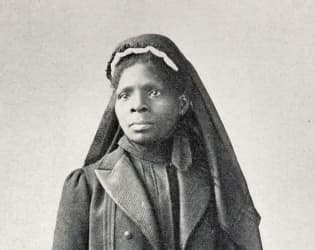
Born into slavery, Susie King Taylor secretly attended school where she learned to read and write. During the Civil War, she successfully escaped to freedom in a daring dash to reach a Union gunboat patrolling near a Confederate fort.
Once she had secured her freedom, Taylor volunteered for the Army’s first Black regiment, where she became the first Black Army nurse. When she wasn’t caring for Black soldiers at the hospital, Taylor taught them how to read.
After the war, she opened a school for Black students in Georgia. She became the only Black woman to publish an account of her life during the Civil War. “What a wonderful revolution!” Taylor declared in her memoir. “In 1861 the Southern papers were full of advertisements for ‘slaves,’ but now, despite all the hindrances and ‘race problems,’ my people are striving to attain the full standard of all other races born free in the sight of God.”
Explore More College Resources

How to Choose Your College Class Schedule
Learn how to create the best class schedule each semester by considering important academic and nonacademic factors.

by Steve Bailey
Updated March 22, 2023

Full-Time vs. Part-Time Student: What’s the Difference?
Discover the challenges and opportunities full-time vs. part-time students face and get tips on which college experience is right for you.

by Marisa Upson
Updated October 12, 2023

Summer Semester: When Does It Start? And Should You Enroll?
School’s out — or, rather, in — for summer. Discover the pros and cons of enrolling in an optional summer semester in college.

by Anne Dennon
Updated March 20, 2023